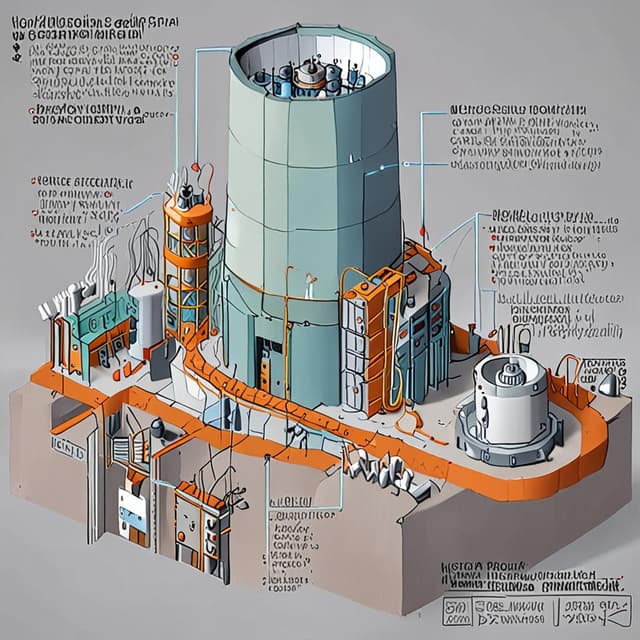
| Purpose | Generate electricity through controlled nuclear fission |
| Benefits | Clean, reliable power • Enabled economic growth and technological progress |
| Challenges | Safety concerns • Radioactive waste disposal |
| Applications | Civilian power generation • Military use |
| First developed | 1930s |
| Technology advancement | Rapid progress over decades |
A nuclear reactor is a device that controls the release of nuclear energy by inducing and maintaining a nuclear chain reaction. Nuclear reactors are used at the heart of nuclear power plants to generate electricity, as well as for various other applications such as the production of medical isotopes or for the propulsion of ships and submarines.
The foundations for nuclear reactors were laid in the 1930s, as physicists made groundbreaking discoveries about the nature of the atomic nucleus and the phenomenon of nuclear fission. Key early pioneers included Enrico Fermi, Niels Bohr, and Lise Meitner, who conducted experiments demonstrating the feasibility of controlled nuclear chain reactions.
In 1934, a team led by Fermi at the University of Rome constructed the first nuclear reactor prototype, a small graphite-moderated device that achieved the first self-sustaining nuclear chain reaction. This research was driven primarily by the desire to develop new sources of electricity and industrial power, rather than military applications as in our timeline.
Over the next decade, nuclear reactor technology rapidly advanced. Larger, more powerful designs were built in various countries, including the United States, Soviet Union, United Kingdom, and France. By 1945, nuclear power had become a viable option for civilian electricity generation, with the first commercial nuclear power plant opening in Obninsk, Soviet Union that year.
The successful demonstration of nuclear power plants in the late 1940s and 1950s led to a global push to harness this new energy source. Virtually every industrialized country in the world built their own nuclear reactors to meet growing electricity demands and reduce reliance on fossil fuels.
By 1970, nuclear power provided over 20% of global electricity generation. Major advances in reactor design, safety systems, and waste management enabled nuclear to become a mainstream, widely-accepted energy source. Countries like France, Japan, and West Germany became leaders in nuclear technology, exporting their expertise and reactor designs worldwide.
As nuclear power expanded, so did research and development into new reactor technologies. Innovations like pressurized water reactors, boiling water reactors, fast breeder reactors, and small modular reactors significantly improved the safety, efficiency, and flexibility of nuclear power.
Compact nuclear reactors also enabled new applications such as the powering of ships, submarines, and even some automobiles and aircraft. These "nuclear engines" provided virtually unlimited range and power without the need for fossil fuels.
While nuclear power has had a generally strong safety record, a few high-profile incidents like the Three Mile Island and Chernobyl accidents have raised public concerns. Improved safety protocols, redundant failsafe systems, and better training of operators have helped minimize the risks.
The long-term storage and disposal of radioactive waste remains an ongoing challenge, though significant progress has been made in developing deep geological repositories and recycling technologies. Newer reactor designs also produce less long-lived waste.
Overall, nuclear power is seen as a critical component of the world's efforts to transition to clean, sustainable energy sources and mitigate climate change. Its reliable, high-density energy output has been a key driver of economic growth and technological advancement in fields like space exploration, robotics, and advanced manufacturing.